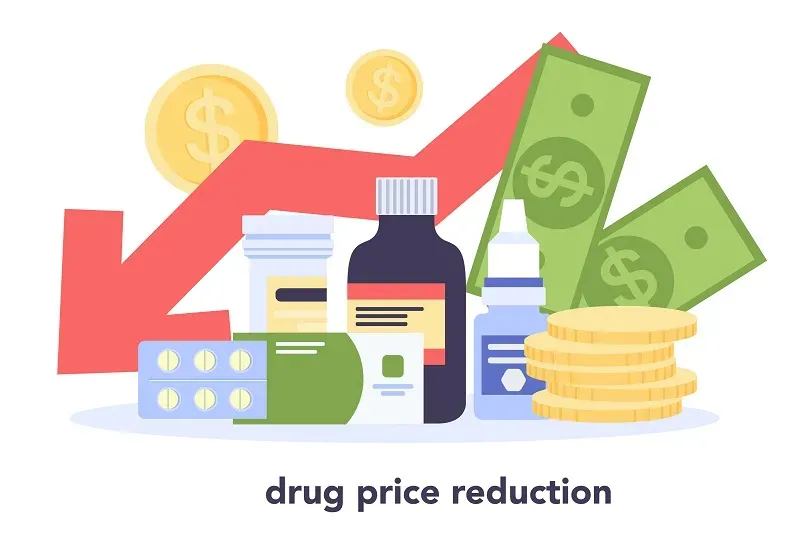The issue of drug price reduction has gained significant traction in recent years, particularly under the Trump administration’s initiatives aimed at lowering costs for American consumers. By implementing the “most favored nation” policy, President Trump seeks to align U.S. drug prices with those in other developed nations, creating a potentially transformative shift in the pharmaceutical industry. This approach could dramatically reduce drug costs, offering relief to many who struggle with high prescription prices. However, experts warn that the path to effective implementation may be fraught with challenges, including potential legal battles with pharmaceutical companies and the need for congressional approval. Ultimately, while the goal of reducing drug prices is commendable, the feasibility of achieving substantial reductions remains in question.
In pursuit of affordable medication, recent strategies have emerged focusing on the need to lower the cost of pharmaceuticals for consumers. This includes a controversial methodology put forth by former President Trump, which aims to equate drug pricing in the United States with those observed in other countries. By advocating for this hospital-equivalent pricing model, the administration hopes to not only provide immediate savings to patients but also challenge the prevailing practices of the pharmaceutical sector. As discussions surrounding fair pricing continue, stakeholders remain increasingly alert to the implications of this pricing alignment on public health and access to essential medications. The emphasis on equitable drug pricing necessitates a multifaceted approach to ensure that citizens can obtain crucial medicines without facing financial burdens.
Understanding the Most Favored Nation Policy
The ‘most favored nation’ policy, as proposed by President Trump, seeks to align U.S. drug prices with those paid by other developed nations. This concept aims to ensure that Americans are not paying exorbitantly higher prices for medications compared to countries with similar health standards. By linking drug costs to those in nations that negotiate effectively for lower prices, such as Canada and several European countries, the U.S. could potentially see significant reductions in costs for both patients and insurance providers.
However, implementing this policy comes with its hurdles. Health policy experts note that Medicare and Medicaid programs, crucial for many Americans, may face challenges in aligning their pricing structures under the new initiative. Additionally, the ambiguity surrounding which drugs will qualify and how these price adjustments will be enforced raises questions about the long-term sustainability of this approach.
Challenges in Implementing Drug Price Reduction Strategies
Implementing Trump’s drug price reduction plan through the most favored nation policy is fraught with difficulties. Experts predict that enacting such a policy may require congressional backing, which is increasingly difficult in a polarized political environment. Furthermore, the pharmaceutical industry has historically resisted pricing reforms, raising the likelihood of legal challenges that could delay or derail the initiative completely.
Moreover, analysts from JPMorgan have pointed out that unless there are concrete measures to hold pharmaceutical companies accountable, they may have little incentive to voluntarily reduce prices. The complexities involved include negotiating equitable pricing while also ensuring that the quality of care remains high—factors that are critical in maintaining public trust in the health care system.
Potential Impact on U.S. Drug Prices
The impact of implementing the most favored nation policy on U.S. drug prices could be profound, with projections suggesting reductions of up to 80% for certain medications. As highlighted by the Rand Corporation, current drug prices in the U.S. are disproportionately higher than in other developed countries, creating a financial burden for consumers and the healthcare system. If successful, this policy could lead to a more equitable pricing structure that reflects global standards.
However, the uncertainty surrounding the implementation remains a significant concern. Health policy analysts debate the feasibility of such dramatic price reductions, especially in light of potential pushback from drug manufacturers. Without clear guidelines and a strategic approach to enforcement, the anticipated savings may not materialize for consumers, leaving them to navigate the complexities of the prescription drug market.
The Stakes for Patients and the Pharmaceutical Industry
As the discussion around reducing drug costs heats up, the stakes are high for both patients and the pharmaceutical industry. Patients, particularly those dependent on life-saving medications, stand to benefit the most from price reductions. By enabling patients to purchase drugs directly from manufacturers at lower, preferred rates, there is a potential to alleviate some of the financial strain many face.
Conversely, the pharmaceutical industry could face significant pressure to adapt its pricing strategies, which may impact profit margins. Companies that have traditionally benefited from higher drug prices may resist such reforms, leading to potential conflicts with policymakers. The balance between ensuring affordable medication and maintaining a viable pharmaceutical sector will be critical as this dialogue progresses.
Comparing U.S. Drug Prices to Global Standards
The disparity between U.S. drug prices and those of other developed nations is staggering. According to various studies, Americans can pay two to three times—or even up to ten times more—for prescription drugs compared to their counterparts in countries that effectively negotiate prices. This gap is a driving force behind the call for reforms under the most favored nation policy, aimed at achieving a level playing field in drug pricing.
By understanding the landscape of global drug pricing, the proposed reforms can set realistic expectations on what reductions might be feasible. As the U.S. looks to align its drug pricing strategies more closely with those of countries that enjoy lower medication costs, it becomes critical that not only the price disparities are addressed but also the reasons behind these differences.
Long-Term Implications of Drug Price Reform
The long-term implications of implementing a drug price reduction strategy are multi-faceted. Should the most favored nation policy succeed in its goals, it could establish a framework for future reforms that prioritize consumer interests. By potentially reducing out-of-pocket costs for patients, broader access to necessary medications could improve public health outcomes, particularly for marginalized communities.
However, failure to effectively implement these measures could lead to prolonged dissatisfaction within the healthcare system. A backlash from both consumers and pharmaceutical stakeholders may prompt calls for alternative solutions, thus prolonging the ongoing debate over drug affordability in the U.S. The success of this policy hinges not just on the initial executive order but on sustained commitment from all parties involved.
The Role of Federal Agencies in Drug Pricing
Federal agencies play a crucial role in the implementation of Trump’s drug pricing plans. With multiple branches required to coordinate efforts under the most favored nation policy, it is essential that these agencies work collaboratively to establish guidelines and frameworks that support the intended reductions in drug costs. Oversight from agencies like the Department of Health and Human Services can help navigate regulatory hurdles.
Moreover, these agencies must be equipped to monitor the impacts of drug price reform. Continuous data collection and analysis will be vital in assessing whether the proposed changes effectively translate into lower costs for patients or result in unforeseen consequences within the healthcare system.
Examining Historical Context of Drug Pricing Policies
To fully appreciate the current push for drug price reductions, it is important to consider the historical context surrounding U.S. drug pricing policy. Previous administrations have attempted various initiatives to control costs, yet many have fallen short due to political opposition or lack of scalability. The most favored nation policy represents a potential shift in approach, drawing from international best practices on pharmaceutical pricing.
Yet, history also teaches caution. For every successful pricing policy enacted in other nations, there are lessons learned from unsuccessful attempts in the U.S. Understanding what has and hasn’t worked in the past can guide the formation of more effective strategies moving forward.
Public Opinion on Drug Price Reform
Public sentiment regarding drug pricing has evolved considerably in recent years, with a growing chorus of Americans advocating for change. Surveys indicate that a significant majority of the population supports measures aimed at reducing drug costs, reflecting widespread discontent with the status quo. This sentiment may influence political dynamics and push policymakers to pursue more aggressive reforms.
However, achieving a consensus on the best approach to drug price reduction remains challenging. Diverging opinions about the role of the pharmaceutical industry, government regulation, and market freedom complicate the customer dialogue around drug pricing reforms. Engaging the public effectively will be critical for any reforms to gain traction and, ultimately, succeed.
Future Directions for Drug Pricing Policy
As discussions surrounding drug pricing continue to unfold, it is essential to consider future directions for policy reform. Innovations in pricing strategies, such as value-based pricing models and enhanced transparency measures, could complement the most favored nation approach by pushing for a pricing system that reflects the true value of medications.
Advocacy for such progressive reforms can lay the foundation for a more equitable healthcare system. It’s crucial for stakeholders—from policymakers to patient advocacy groups—to work together in exploring and implementing solutions that promote affordability while ensuring the sustainability of the pharmaceutical industry.
Frequently Asked Questions
What is the ‘most favored nation’ policy in relation to drug price reduction?
The ‘most favored nation’ policy in the context of drug price reduction refers to President Trump’s strategy to align U.S. drug prices with those in other developed countries, which typically enjoy lower costs. This approach aims to significantly reduce drug costs for American patients by ensuring they pay prices that are competitive with those in other nations.
How does Trump’s drug policy plan to reduce drug costs for Americans?
Trump’s drug policy aims to reduce drug costs by linking U.S. prices to those in other developed countries through the ‘most favored nation’ policy. This initiative instructs federal agencies to ensure that Americans do not pay more for medications than what citizens of other nations pay, potentially leading to substantial savings on prescription drugs.
What challenges exist for implementing Trump’s drug price reduction strategy?
Implementing Trump’s drug price reduction strategy faces significant challenges. Analysts highlight the necessity of congressional approval, potential legal disputes with the pharmaceutical industry, and a lack of clear implementation mechanisms. These factors may hinder the effective execution of the ‘most favored nation’ policy.
Will the pharmaceutical industry comply with the ‘most favored nation’ policy for drug price reduction?
Experts remain skeptical about the pharmaceutical industry’s willingness to comply with the ‘most favored nation’ policy for drug price reduction. There is minimal incentive for drug manufacturers to lower prices, and the industry’s typical resistance to price regulation poses a significant hurdle for the policy’s success.
What potential impact could Trump’s drug price reduction policy have on patients?
If successfully implemented, Trump’s drug price reduction policy could lead to substantial financial relief for patients by lowering the prices of medications. However, health policy experts caution that the actual impact remains uncertain due to various implementation challenges and potential opposition from the pharmaceutical industry.
How do U.S. drug prices compare to prices in other developed nations?
According to the Rand Corporation, U.S. drug prices are frequently two to three times higher than in other developed nations, with some prices being up to ten times higher. This stark contrast underlines the necessity for policies like Trump’s aimed at reducing drug costs and improving affordability for American consumers.
What are the expected drug price reductions under Trump’s policy?
President Trump has suggested that his drug price reduction policy could lead to price decreases of between 59% and 80%, with some estimates reaching as high as 90%. However, experts warn that these figures are speculative, and the actual outcomes will depend on the policy’s implementation and acceptance by the pharmaceutical industry.
What role do middlemen play in drug pricing, and how might Trump’s policy change that?
Middlemen, such as pharmacy benefit managers, often influence drug pricing, which can inflate costs for patients. Under Trump’s drug price reduction policy, there is an aim to allow patients to purchase medications directly from manufacturers at ‘most favored nation’ prices, potentially bypassing middlemen and lowering costs.
What is the timeline for Trump’s drug price reduction initiative?
The timeline for Trump’s drug price reduction initiative remains unclear. While expectations for immediate implementation are common, analysts express doubt regarding the speed and efficacy of the policy, given the many obstacles to overcome, including legal challenges and the need for regulatory clarity.
How can patients benefit from the ‘most favored nation’ policy related to drug prices?
Patients could significantly benefit from the ‘most favored nation’ policy by gaining access to lower drug prices that are more in line with prices paid in other countries. This could result in decreased out-of-pocket expenses for medications, improving overall affordability and access to necessary treatments.
| Key Points | Details |
|---|---|
| Trump’s Plan to Reduce Drug Prices | Link U.S. drug prices to those in developed nations to lower costs. |
| Most Favored Nation Policy | Executive order to align U.S. drug prices with lower international costs. |
| Potential Savings | Predicted reductions of 59% to 90% have been claimed. |
| Challenges to Implementation | May need congressional approval and face legal issues with pharmaceutical companies. |
| Skepticism from Health Policy Experts | Unclear how effective the policy will be; actual price reductions may not occur. |
| Purchasing Medications Directly | Plan to enable patients to buy directly from manufacturers at favored prices. |
Summary
Drug price reduction is a critical issue in the U.S., and Trump’s executive order aims to address this by linking prices to those in other developed nations. While the ambition behind the policy is notable, significant hurdles exist in its implementation, from potential legal challenges to the uncertainty of actual cost reductions. Health policy experts remain cautious, suggesting that the path to lower drug prices is fraught with difficulties, and the results may not materialize as expected.



